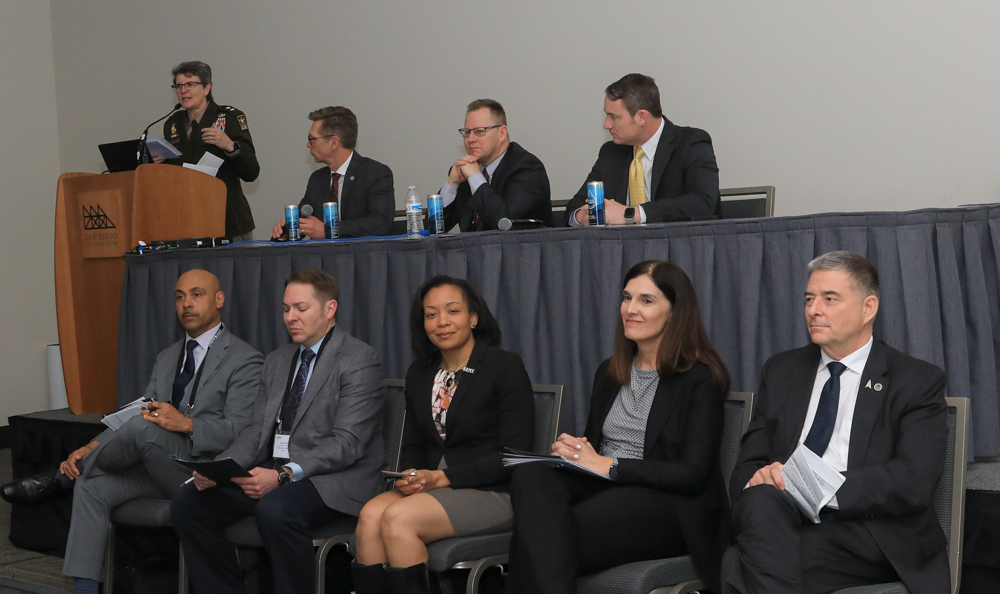Not all students should be pushed toward a college pathway. Similarly, not all military enlistees must be able to do 50 pushups in less than a minute.
The Department of Defense is employing a communication strategy that highlights the breadth of career possibilities students can pursue. The campaign is focused on dislodging the negative stigma attached to military service and addressing misconceptions.
This was the key message of a panel discussion at AASA’s 2024 National Conference on Education titled “Creating the 2030 Workforce: State and District Collaboration with the Department of Defense.”
The panel discussion was moderated by Major General Deborah Kotulich, who is the director of the U.S. Army’s Recruiting and Retention Task Force. Major General Kotulich moderated a discussion between and among Alabama and Washington education officials, along with various representatives from the U.S. Armed Forces.
Why Alabama and Washington? Data show those states have robust military enlistments thanks to an increased focus on ensuring all high school students obtain thorough understandings of what it means to “enlist” in a branch of the military.
“We have so many opportunities for civilian service. You can do so many things. Eighteen-year-olds oftentimes have no idea what they want to do,” Yvette K. Bourcicot, principal deputy assistant secretary of the Army for manpower and reserve affairs, said.
To that point, more high schools across the U.S. have begun to further illuminate the importance of the Armed Services Vocational Aptitude Battery test. Eric Mackey, state superintendent of education in Alabama, and Chris Reykdal, the chief state school officer in Washington, have worked to strengthen connections with military installations in their states and further study and implement military enlistment as a key college/career readiness indicator.
Additionally, local school administrators have recognized the importance of parent buy-in.
Panelist Wesley Hester, assistant superintendent of Alabaster City Schools in Alabama, spoke about the critical connection military recruiters must establish with parents of students.
“[Parents] increasingly see the opportunities our students have to start their careers and even start their college pathway through military means,” Hester said.
The multi-faceted panel discussion, which lasted an hour, touched on many challenges and opportunities that lie ahead for both K-12 and the DoD. Myriad armed forces career pathways – especially in the civilian realm – exist for those students willing to take a look.
“The way that we operate today, there is a role for everyone. It is very flexible. It can be very flexible and a lot of folks don’t understand that,” Kotulich said. “We know that we have a job to do to raise awareness and understanding surrounding these opportunities.”
(Jason Gaston is public relations coordinator of Alabaster City Schools in Birmingham, Ala.)

